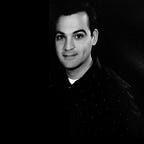HBO goes all in on Watchmen
Season 1 Episode 1 — Rorschach’s Conflict
***What is SPOILER if in 5 minutes you have seen the SPOILER already***
The world of Watchmen has never been simple, and HBO has recognized the magic that makes this series a worthwhile undertaking. Watchmen is a master-class world-builder which intertwines a complex tapestry of stories, motives, and interactions—transversing space, time, and literature—while dealing with all sorts of social malaise. The movie captured the dense-source material well, but the format was ill-equipped to handle what is a beef-bourguignon meal in a six-inch dessert plate. However, HBO seizes the minutiae of the recipe while serving Watchmen in the appropriate, adult-sized dish.
In keeping with the comics’ extensive use of mise en abyme (a story within a plot), the show opens up with a silent film depicting a bad cop and a vigilante; can we say foreshadowing? The scene breaks away to another typical trope from the comics a historical scene, in this case, the Tulsa Race Massacre of 1921. There is an immediate drawing in and sadness that imbues the remaining run-time with the same hue of the original storyline, which was extremely preoccupied with the greater moral failings of humankind and the ways it is rushing into self-annihilation. Tapping into the current racial tension, HBO modernizes the franchise, while also creating a piece of art that informs the times. It relies on the source material in a meticulous, time-piece precision, but also manages to create something new, something captivating.
The second scene juxtaposes the 1920’s racial discrimination and violence with today’s anxieties about the police and policing, but—obviously—with an in-world twist. The cops have to request use of the guns and deal with bureaucracy, technology, and human error. This all leads to the violent shooting of the cop that opens the scene by non-other than a white-supremacist. At first, it is hard to follow the details, but Watchmen is all about the details.
The Ford, which the cop stops, is electric. In a world that has a real-life blue super-hero (more like god) since the 1960s, one of the first things society does is transition to all-electric vehicles. Tiny easter-eggs like the one cited above, straight out of the comics, help us understand more complex issues. For example, the Ford driver reveals a mask resembling Rorschach’s mask (one of the comic’s main characters). Rorschach was himself sympathetic, if not a member of the far-right, and subscribed to their ideas and thoughts. He sent his journal to a far-right publication right before he died. It seems, that journal became a manifesto with a wide following by hate-filled white-supremacists.
What makes Watchmen, the show and the comics, so fascinating is the moral ambivalence—maybe ambiguity is a better word—which permeates throughout the lived-in universe. It is not as evident in the first episode, but it will be as the series develops, that maybe doing the wrong thing is the right thing to do. To bring about ‘world peace,’ in-universe history tells us, Ozymandias killed more than three million individuals in New York, and the series ‘heroes’ accepted in as a necessary evil. Why? Well, it avoided nuclear armageddon and turned humanity’s internal bickering externally. It gave them something greater than their neighbor to fear. It gave them the other, the alien, a force so powerful they had to join forces to fight it and refocus their efforts, enmity, and aggression towards it.
The one person, who believed above all else that a lie should not be accepted as the foundation for peace; that evil-doers should be held accountable no matter what benefits the world might get from their actions; that the right thing is always the right thing to do, even if the greater good is served by an evil act; that was Rorschach: the guy who subscribed to a far-right-wing platform. The man who held beliefs that most people would find repugnant was also the man who ultimately held the more cohesive truth—not about race or the other despicable things these groups belief—but the actual truth, which he would have shared with the world. And for that, he was murdered.
Now, you have a group with despicable views holding on to an objective truth out of fanaticism, but probably the very few in-universe characters that probably know about the biggest lie the world has coalesced around. These are the people you aren’t supposed to like and, yet, knowing what we know about how the original source material worked, I’d be wary to write them off as insignificant players simply set up to add bumps and conflict to the plot. They might hold the key to the series.
***
The author of this article does not sympathize in any way, shape, or form with the repugnant views of the alt-right, far-right, Nazis, or white-supremacists. He is simply elucidating the connection this in-universe group has with Rorschach, which himself was a complicated character. As was stated at the beginning of the article, Watchmen is complicated, which is why it is such a compelling piece of art. The author is simply trying to deconstruct this complex story in a manner that makes sense to him, and hopefully to you.
